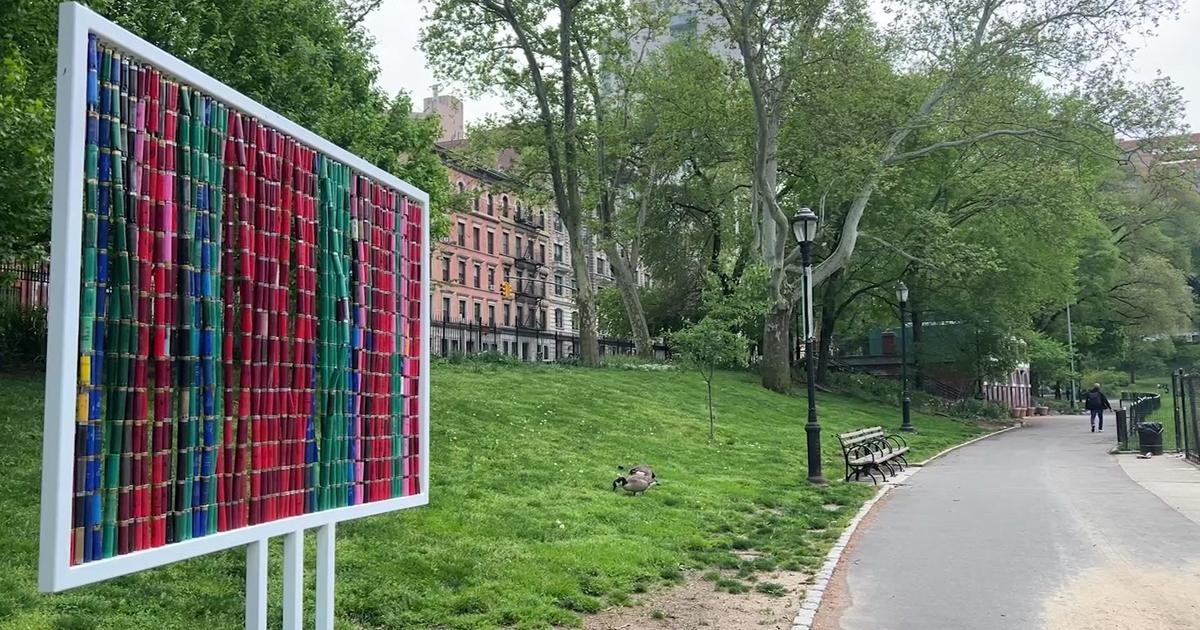Differences Between Tree, Grass And Ragweed Pollens
NEW YORK (CBSNewYork) — While all of your friends eagerly await the blossoming spring, you start running out to your local pharmacy in order to stock your medicine cabinet with nasal sprays, allergy pills, antihistamines, and those little white masks that you strap onto your face when it's time to cut the grass. Sound familiar? If it does, then you obviously already know that you suffer from allergies.
But not all allergies are the same. Paying attention to what happens to your body and, more importantly, when it happens, can go a long way in helping you to see the bigger picture. Following is a dash of information to help enhance your understanding of this often invisible enemy called pollen.
What Is Pollen?
In short, pollen is a daddy plant's way of making baby plants. That's right: The cause for all of those aggravating sniffles is the microscopic grains that come from the male part of a flower being carried adrift in a breeze with the hopes of one day alighting upon a female so together they can start a family. Maybe even fertilize an entire garden of their own, if they are lucky.
This is important to grasp, because that means those little triggers that drive your nose insane only happen during mating season, if you will. They are not year round events. Pinpointing when your symptoms are the worst can help you deduce exactly what it is that's being such a nuisance.
Tree Pollen
Trees deliver the first assault. If it's a typical season, you can count on your inaugural annual sniffles to appear just as winter begins to fade because trees start letting go of their pollen in the late winter and early spring. According to the American College of Allergy, Asthma, & Immunology, some of the trees most responsible for producing irritating gamete—the scientific term for what makes you sneeze—include ash, aspen, beech, birch box elder, cedar, cottonwood, elm, mulberry, oak, and willow.
Grass Pollen
The second wave of attack comes from the grasses. Just when you think relief is in sight, spring is in full bloom and summer is just starting to make it's sweltering presence known, that's when the grass decides, "Now would be an excellent time to pollinate!" And, boom! Your sneezing kicks right back into high gear.
Differences Between Tree, Grass And Ragweed Pollens
The flora's tag team strategy continues to work its sadistic magic on your nose at the tail end of summer. Fall is in the air, a brief respite buffering the extremes between summer and winter. You'd think it would be the most blissful season of all. But not if you suffer from ragweed allergies, because that's exactly when the weeds like to get frisky.
Know Your Allergen
Paying attention to when you are sneezing the loudest throughout the year can offer a big clue as to what is causing the ruckus in your nose and lungs. Alternately, looking back over your annual budget and determining which month you spent the most on tissues could also provide some insight on what's going on in the war between nature and your immune system.
Allen Foster, a lifelong Greater Philadelphia resident, has been writing about all those wonderful things that make us feel so alive for over 20 years. He approaches each day as an adventure, eager to discover what new and vibrant surprises await just around life's corner. You can see his work on Examiner.com.



